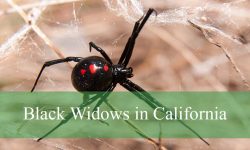Seen across much of Texas, tarantulas are often mistaken for dangerous creatures, though their biology tells a far more interesting story. Their large bodies, hairy legs, and slow but deliberate movements can create an intimidating first impression. Yet beneath this dramatic appearance lies a gentle, slow-paced, ecologically valuable spider with a behavior pattern far more peaceful than most Texans realize. From the canyons of West Texas to the grasslands of the Rolling Plains and the brush country of South Texas, tarantulas thrive in warm, arid landscapes that support their burrowing lifestyle.
Texas is home to several species of tarantulas, with the Texas brown tarantula (Aphonopelma hentzi) being the most widespread. These spiders rely on stable burrows, nocturnal hunting, and a suite of physiological adaptations to survive drought, extreme temperatures, and seasonal fluctuations. They are essential predators of insects, small arthropods, and occasionally small vertebrates, making them key contributors to the ecological balance of Texas habitats.
Below are eleven important things you should know about tarantulas in Texas—facts that reveal how unique, misunderstood, and ecologically significant these spiders truly are.
1. Tarantulas in Texas Are Primarily Nocturnal Burrow Dwellers

Their Burrows Offer Protective Microclimates
Tarantulas spend most of their lives inside underground burrows lined with silk. These burrows moderate heat and moisture, providing stable conditions throughout Texas’ harsh climate cycles.
Burrows also shield them from predators during the day.
Most above-ground sightings occur shortly after dusk.
They Use Silk as Structural Support
Although tarantulas cannot spin webs for trapping prey, they use silk to reinforce burrow walls, prevent collapse, and create trip lines that signal approaching insects.
This silk-based communication keeps them aware of their surroundings.
The burrow is both shelter and sensory extension.
Their Above-Ground Activity Is Seasonal
During summer thunderstorms or breeding season, tarantulas may wander more frequently. At night, males search for females, while females remain near burrow entrances.
Their movement patterns reflect weather and reproductive timing.
Most encounters occur during late summer evenings.
2. Texas Is Home to Several Native Tarantula Species
The Texas Brown Tarantula Is the Most Common
The Texas brown tarantula is widespread across central, western, and northern regions of the state. Its large size and calm temperament make it the species most people encounter.
Its range extends into grasslands, deserts, and semi-arid scrub.
This species defines Texas tarantula ecology.
Other Aphonopelma Species Also Occur
Several lesser-known species inhabit localized regions. For example, Aphonopelma anax is found in South Texas brush, while Aphonopelma moderatum occurs near the Big Bend and Edwards Plateau.
Each species has distinct coloration and habitat preferences.
Texas hosts some of the highest tarantula diversity in the U.S.
Species Identification Can Be Difficult
Aphonopelma tarantulas look similar and require microscopic examination for accurate identification. Geographic ranges help but are not always definitive.
Scientific classification is ongoing.
New species continue to be described in Texas.
3. Tarantulas Are Much More Docile Than Their Reputation Suggests
They Rely on Threat Displays, Not Bites
When threatened, tarantulas prefer to raise their front legs, show fangs, or back away rather than bite. Their goal is to discourage predators without conflict.
This defensive posture is exaggerated but rarely followed by attack.
Biting is a last resort.
Bites Are Rare and Typically Harmless
Tarantula venom is mild to humans, similar to a bee sting. Pain and swelling occur, but serious medical complications are extremely rare.
Their venom targets insects, not mammals.
Most bites occur only when handled improperly.
Their Calm Behavior Helps Them Survive
Tarantulas conserve energy by avoiding unnecessary movement. Their slow, deliberate actions reduce detection by predators like birds, skunks, and coatis.
Being cautious is an evolutionary advantage.
Their temperament is a key survival trait.
4. Tarantulas Use Urticating Hairs as Their First Line of Defense
These Hairs Are Extremely Effective Irritants
Tarantulas flick barbed hairs from their abdomen using their hind legs. These hairs irritate predators’ eyes, skin, and mucous membranes.
The hairs create immediate discomfort.
Predators quickly retreat when exposed.
Hairs Offer Protection Without Venom
Because hairs are used more often than bites, tarantulas conserve venom for hunting. This allows them to avoid unnecessary venom expenditure.
The strategy is efficient and energy-saving.
It also reduces dangerous encounters.
Domestic Pets Are Commonly Affected
Dogs and cats may sniff or paw tarantulas, triggering hair release. Irritation usually resolves within hours but can be painful.
Hairs are far more common issues than bites.
Most incidents are harmless but uncomfortable.
5. Tarantulas Have a Slow Growth Rate and Remarkably Long Lifespans
Females Can Live 20 to 30 Years
Female tarantulas have exceptionally long lifespans for arthropods. They grow slowly, molting through juvenile stages before reaching maturity.
Long life supports reproductive success.
Females maintain territories for many years.
Males Live Much Shorter Lives
Male tarantulas typically live only one or two years after maturity. Their energy is invested in searching for mates rather than long-term survival.
This lifespan difference is common throughout spider species.
Males die soon after mating attempts.
Molting Continues Even After Maturity
Female tarantulas molt periodically to repair damage, replace hairs, and maintain health. Molting also helps remove parasites.
Molting makes them temporarily vulnerable.
Recovery requires undisturbed shelter.
6. Texas Tarantulas Play an Important Role in Controlling Insect Populations
They Consume a Wide Range of Prey
Tarantulas feed on crickets, beetles, grasshoppers, cockroaches, and other large arthropods. They occasionally capture small vertebrates like lizards or pinky mice.
Their predation helps maintain ecological balance.
They reduce agricultural pests naturally.
They Help Regulate Insect Cycles
By targeting abundant insects, tarantulas help stabilize population swings. Their hunting contributes to healthy ecosystems throughout Texas.
Their presence benefits farmlands and ranchlands.
Predator roles extend across multiple habitats.
Their Nocturnal Behavior Aligns With Prey Activity
Many insects are active at night, giving tarantulas consistent feeding opportunities. This synchronization supports efficient energy use.
Their night hunting improves survival.
It shapes their ecological niche.
7. Male Tarantulas Wander Through Texas Landscapes During Breeding Season
Late Summer and Early Fall Are Peak Times
From August to October, mature males leave their burrows and roam long distances searching for females. This behavior makes tarantulas suddenly more visible.
Road crossings and backyard sightings increase sharply.
The migration is natural and temporary.
Males Follow Chemical Cues
Females leave pheromone traces near burrow entrances. Males detect these chemicals and approach cautiously.
Courtship involves tapping and leg displays.
These behaviors reduce aggression between spiders.
The Journey Is Dangerous
Predators, cars, dehydration, and exhaustion pose risks for males. Many die before finding a mate.
The breeding wander is a one-way mission.
Their short lifespan reflects this sacrifice.
8. Tarantula Venom Is Mild but Highly Effective for Their Prey
Venom Quickly Immobilizes Arthropods
Tarantula venom breaks down tissue and disrupts muscle function in insects. Prey is paralyzed within moments, allowing safe feeding.
This venom is specialized—not designed to harm large animals.
Its efficiency supports successful hunting.
Tarantulas Use External Digestion
After venom immobilizes prey, tarantulas release digestive enzymes that liquefy tissues. They then consume the nutritious liquid.
This process maximizes caloric intake.
Solid parts remain uneaten.
Venom Composition Varies Slightly Between Species
Texas tarantula species have similar venom components, but minor differences affect potency toward insects.
These variations reflect evolutionary pressures.
Venom is adapted to local prey types.
9. Tarantula Burrows Are Essential Microhabitats in Texas Ecosystems
Burrows Provide Shelter for Other Animals
Abandoned burrows are used by beetles, lizards, rodents, and other spiders. These microhabitats support biodiversity across Texas grasslands and deserts.
Burrows contribute to soil aeration.
They influence nutrient cycling at small scales.
Tarantulas Modify Soil Structure
Their digging loosens compacted soil, improving water infiltration. This helps maintain plant health in dry ecosystems.
Their ecological influence extends underground.
They are small-scale ecosystem engineers.
Burrow Stability Depends on Substrate
Caliche soils in West Texas offer excellent stability, while sandy soils require more silk reinforcement.
Burrow type reflects local geology.
Their engineering adapts to environmental conditions.
10. Texas Tarantulas Face Threats Despite Their Widespread Presence
Habitat Loss Reduces Burrow Opportunities
Urban expansion, agriculture, and land fragmentation destroy burrow sites. Loss of intact grasslands particularly affects tarantula populations.
Habitat stability is essential for long-lived females.
Burrow-dependent species are vulnerable to disturbance.
Vehicles Pose Significant Risks
Male tarantulas crossing roads during breeding season suffer high mortality. Nighttime movement near highways increases danger.
Roadkill strongly impacts local populations.
Mitigation requires habitat-aware planning.
Pesticide Use Affects Prey Availability
Insecticides reduce the arthropods tarantulas depend on. Declines in prey abundance can indirectly reduce tarantula survival.
Their health reflects broader ecological conditions.
Chemical impacts accumulate over time.
11. Tarantulas Are Far More Beneficial Than Harmful in Texas
They Help Control Pests Naturally
Homeowners, farmers, and ranchers indirectly benefit from tarantula predation. They reduce beetles, crickets, roaches, and other nuisance insects.
Their presence improves ecological balance.
They protect crops and gardens.
They Pose Little Danger to Humans
Tarantulas are shy, avoid conflict, and rarely bite. Their venom is mild and medically insignificant.
Fear is based on appearance—not scientific reality.
Coexistence is easy with simple awareness.
Education Helps Reduce Misconceptions
Understanding tarantula biology encourages conservation and reduces unwarranted fear.
Tarantulas enrich Texas ecosystems.
Their role deserves appreciation, not avoidance.
FAQs About Tarantulas in Texas
Are tarantulas dangerous?
No. Their venom is mild and they avoid confrontation.
When are tarantulas most visible in Texas?
Late summer and early fall when males search for mates.
Do tarantulas climb?
Yes, but they prefer ground-based movement and burrows.
What do tarantulas eat?
Insects, arthropods, and occasionally small vertebrates.
Where are tarantulas found in Texas?
West Texas, Central Texas, North Texas, and parts of South Texas.
Are tarantulas aggressive?
No. They rely more on threat displays and urticating hairs.
How long do tarantulas live?
Females may live 20–30 years; males live much shorter.
Do tarantulas make webs?
They make silk-lined burrows, not prey-catching webs.
Conclusion
Tarantulas in Texas are remarkable creatures with a blend of slow-paced movement, ecological importance, gentle behavior, and surprising biological adaptations. Their burrow-based lifestyle, nocturnal hunting, long lifespans, and critical role in controlling insect populations reveal a spider that is both complex and essential to Texas ecosystems. These eleven important facts offer a clearer view of a species often misunderstood due to appearance alone.
By understanding their behavior, physiology, and ecological contributions, Texans can appreciate tarantulas as valuable members of the landscape—quiet predators that maintain balance in grasslands, deserts, and scrub habitats across the state.






